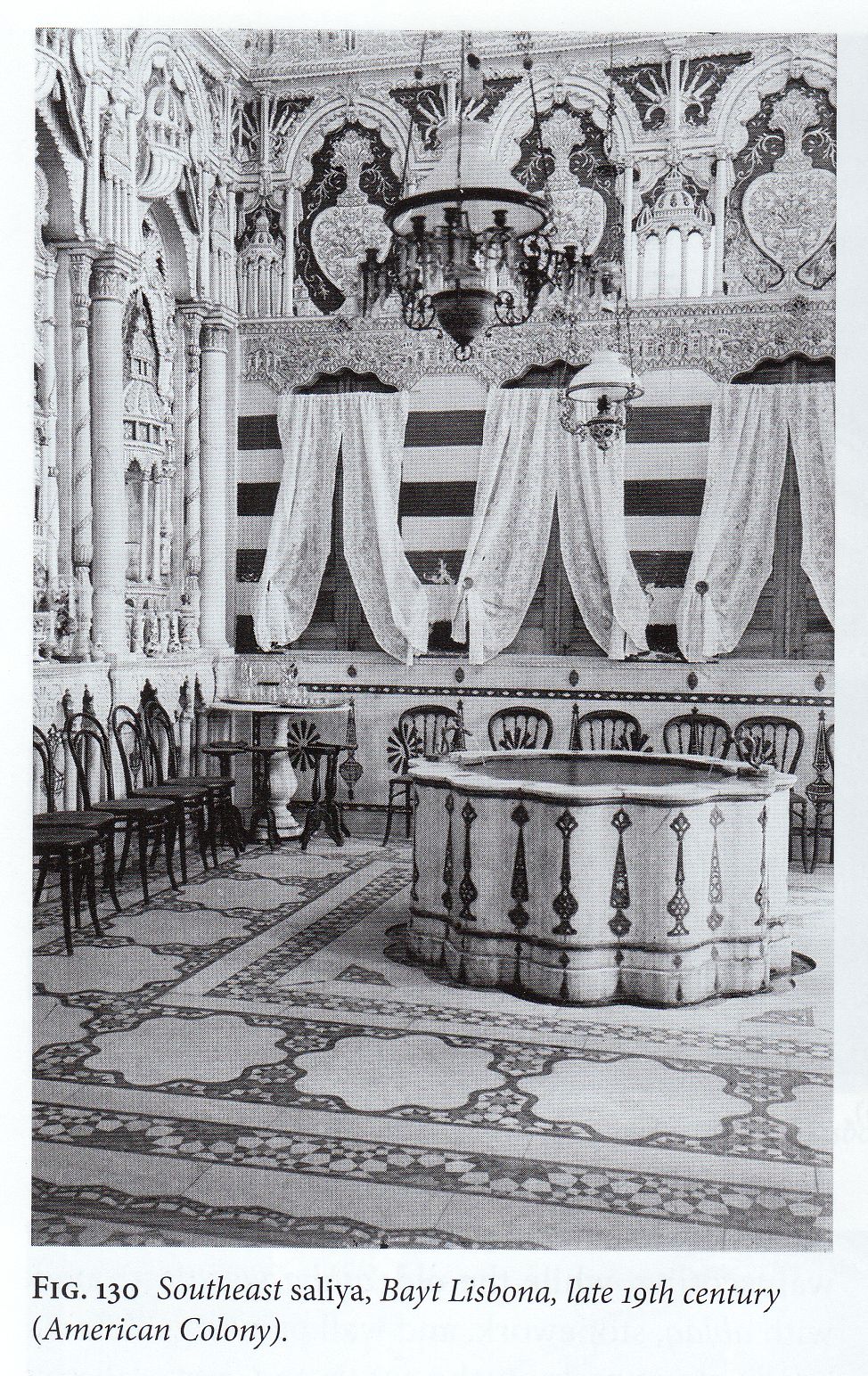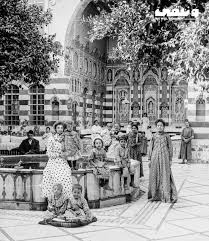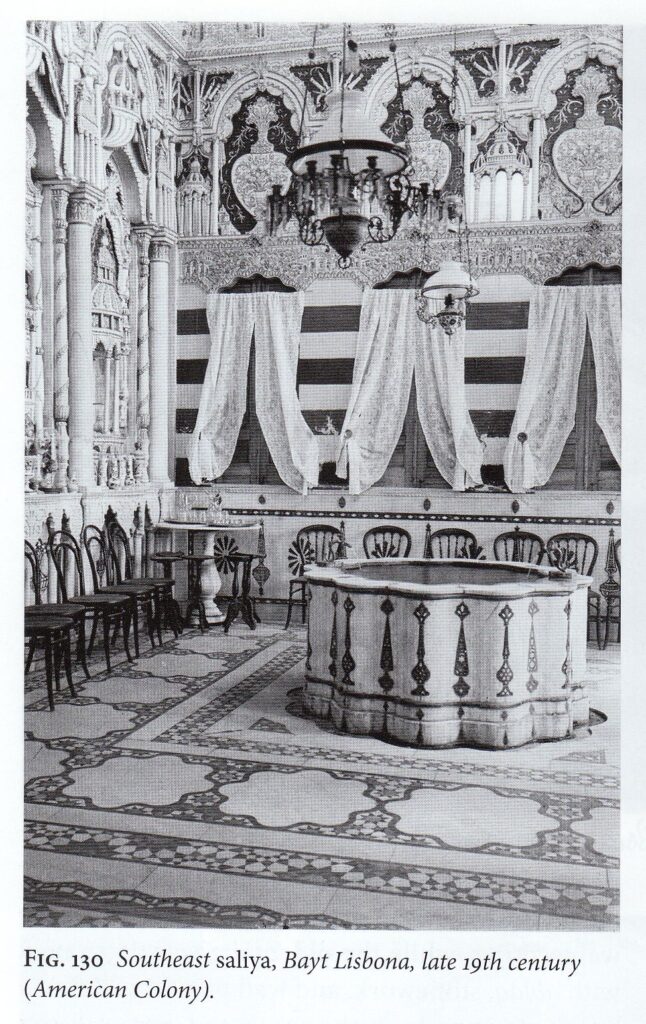Bayt Lisbonna (also known as Lisbon House), A Historic Damascene Jewish Palace
Bayt Lisbonna stands as one of the finest examples of early 19th-century Damascene architecture and is considered among the most distinguished homes of Jewish Syria. The house was constructed between 1810 and 1820, with a full reconstruction undertaken between 1865 and 1872.
It is located within the walls of Old Damascus, in the Tallet al-Hijara quarter at its junction with Zaqaq al-Katateeb near Hosh al-Basha, close to the historic Menasha Synagogue in the Jewish quarter, now renamed Hayy al-Amin. In the early 20th century, the house was repurposed as a Jewish school.
At the heart of the residence lies an inner courtyard (ṣaḥn jawwānī), around which the house is centered. It features a prominent southern iwan and a smaller eastern one. The decoration includes three large mihrabs, with two smaller niches set between them, all crowned with vegetal ornamentation.
The side walls of the iwan, the western wall especially, contain three windows and a doorway above which alternate medallions and decorative canopies. A trio of small windows above the door separate it from a top medallion inscribed with traditional Hebrew blessings for the house. The larger window medallions remain empty, possibly left unfinished or unused by the original residents.
The courtyard itself is beautifully paved with large marble slabs housing ornamental fountains where goldfish swim. Surrounding the water features are orange, lemon, jasmine, and other fragrant shrubs rising from mosaic-paved grounds refreshed by the mist of two or three flowing fountains. Flowering vines and shrubs climb along trellises, casting shade and spreading delicate scents throughout the space. The rooms are open to the courtyard and oriented toward it in typical Damascene fashion.









